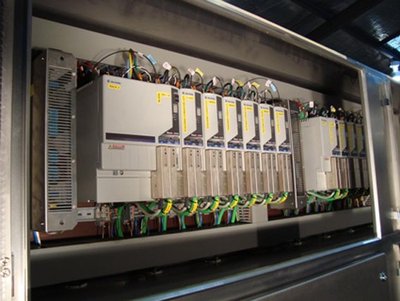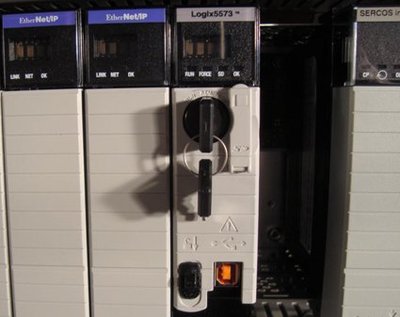Slicing cheese with automated precision
Friday, 23 November, 2012
New Zealand boasts a world-class dairy industry with annual exports in excess of NZ$11 billion. This success can be largely attributed to technological advances in both farming practices and manufacturing techniques. Key strengths of NZ’s dairy industry include its all-grass farming system, large-scale processing and high levels of R&D. With a reputation for providing products that comply with rigorous health and safety standards, the NZ dairy industry is forecast to benefit from continued growth and productivity for many years to come.
Cheese production is one of the most complex in the dairy industry, involving a variety of processes to achieve the final product. Automating processes in cheese manufacture can improve a manufacturing plant’s productivity to meet increasing demand.
Accurate control and customisation of manufacturing processes is necessary for optimal large-scale quality cheese production. Skilled engineers and technologists are required to designing manufacturing processes to produce consistent product characteristics that meet customers’ expectations. Advances in process and motion control technology have allowed processes that have historically been manually operated in a cheese manufacturing plant to be automated, improving efficiency and safety.
When an international cheese manufacturer decided to automate its cheese slicing processes, it called on Cheese Solutions New Zealand Ltd (CSL), a leading New Zealand OEM machine builder, to design a system to meet its specific requirements. CSL utilised the design capabilities of long-standing system integration partner Integrated Automation Ltd (IAL) to develop a solution that would meet the manufacturer’s requirements.

Recent advances in motion control technology take cheese slicing to a whole new level. The project requirement was to take an industry-standard block of cheese and slice it to specified dimensions and weight. When looking for products on the market that could achieve this, IAL decided to use the control processor capabilities of ControlLogix from Rockwell Automation.
The challenge was to provide the customer with a complete cheese-slicing production line that could take a 20 kg block of cheese and pass it through a number of machines to break it down into smaller blocks which would then be sliced to form the end product: a slice of cheese measuring 90 x 90 x 2.5 mm. The solution lay in providing precise, high-speed synchronised motion control.
An important part of this was accurate control of the portioning process to ensure the product was cut accurately with minimal wastage. According to Stephen Cotter, Solutions Architect - Motion Control, Rockwell Automation, “While the rest of this plant utilises product solutions from Rockwell Automation, this new machine required additional motion control capabilities.” The new L73 processor, which has faster processing capabilities and improved motion control, was used. “It’s certainly the processor for the job because it’s up to speed to control the motion at the cheese-slicing business side,” continued Cotter.

The application depends on precise motion control and timing. The block of cheese has to be indexed precisely because the slicing is performed with a rotating knife. Movement of the cheese and rotating blade needs to be coordinated as the speed at which the cheese must move is dependent on the density, weight and size of slice required. To achieve this, ControlLogix required a sample code with a particular CAM profile that the Rockwell Automation OEM team developed in Singapore. ControlLogix provided the single control platform with RSLogix5000 design and configuration software.
“In addition to the advanced control capabilities required, building this machine also required a comprehensive mechanical design to ensure the machine’s mechatronic system is reliable enough to carry out the tasks of slicing the product,” said Donovan Ryan, Director, IAL. “There was no other choice but to go with the new L73 processor in this high-speed motion application; every millisecond was critical.”
Safety was also a consideration. The mechanical design of the cheese-slicing machine ensures the rotating blade was protected from operator access at all times. Maintenance requirements were minimal as the engineers were already familiar with the Logix technology.
The cheese slicer provides the manufacturer with the flexibility to adjust the cheese’s thickness automatically. By checking the weight, the thickness of the slice can be adjusted by changing the CAM profile to account for the density of the cheese. “This solution provides the customer with the ability to accurately perform to the required velocity with the ease of integration using RSLogix5000 motion control commands,” said Cotter.
As consumer demand increases, automation and process technology help improve productivity in the cheese industry. The benefits of automating the cheese manufacturing plant extend beyond the amount of product on the supermarket shelf. Establishing clean, efficient and automated processes minimises wastage of natural resources while providing industry with a way to meet increasing customer demands for quality dairy products.
Advanced robotics in tomorrow's factory
Addressing the production challenges of complexity, customisation and openness.
Cracking the nut: robotic automation at Freedom Fresh
SCARA robots from Shibaura Machine have found a place in helping to package macadamia nuts.
Food plant expansion sustained by central robotic palletising system
A palletising system with eight robotic cells has been installed at Unilever's food factory...












